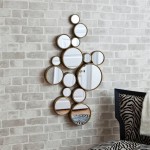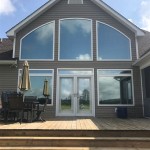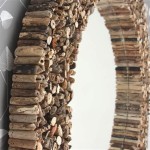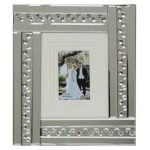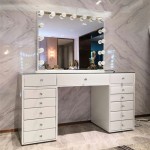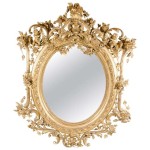Replacing Glass in an Antique Mirror
Antique mirrors possess a unique charm and historical significance, adding character and depth to any space. However, the delicate nature of aged glass makes them susceptible to damage over time. When the glass in an antique mirror breaks or becomes severely deteriorated, replacing it becomes necessary to preserve the mirror's frame and overall aesthetic. This process requires careful consideration and specialized techniques to ensure the mirror's antique value is maintained.
Assessing the Damage and Mirror Type
Before undertaking any replacement work, it's crucial to assess the extent of the damage and identify the type of antique mirror. Different eras employed various glass-making techniques, resulting in variations in glass thickness, reflectivity, and even color. Identifying the mirror's age and style will help determine the most appropriate replacement glass and techniques. For example, early mirrors often utilized mercury-backed glass, which requires special handling due to its toxicity. Consulting with a professional antique mirror restorer is highly recommended, especially for mirrors with significant historical or monetary value.
Choosing the Right Replacement Glass
Selecting the correct replacement glass is paramount to preserving the antique mirror's authenticity. Modern float glass, while readily available, often lacks the subtle imperfections and distortions that characterize antique glass. These imperfections, created by the historical glass-making process, contribute significantly to the mirror's antique charm. Options for replacement include antique glass salvaged from other damaged mirrors or specially manufactured glass designed to mimic the look and feel of older glass. Factors to consider include the glass thickness, color, and the presence of any antique silvering or imperfections.
Removing the Damaged Glass
Removing the broken or damaged glass requires extreme caution to prevent further damage to the frame. Protective gloves and eyewear should be worn at all times. Depending on the mirror’s construction, the glass may be held in place by clips, putty, or wooden strips. Carefully loosen or remove these securing elements. If the glass is shattered, use a vacuum cleaner with a HEPA filter to collect small shards. Larger pieces can be carefully removed with gloved hands or pliers. Documenting the removal process with photographs can be beneficial during reassembly.
Preparing the Frame
Once the damaged glass is removed, the frame should be inspected for any damage or deterioration. This is an opportune time to address any necessary repairs or cleaning. Loose joints can be reglued, and the frame can be gently cleaned with a soft cloth and appropriate cleaning solution, taking care not to damage any existing finish or gilding. The frame’s rabbet, the channel that holds the mirror, should be cleaned of any old putty or adhesive residue to ensure a proper fit for the replacement glass.
Installing the New Glass
Installing the new glass requires precision and a steady hand. The chosen glass should be carefully measured and cut to fit the frame’s rabbet. Traditional methods often involved using a thin layer of putty to secure the glass within the frame. Modern adhesives can also be used, but it is essential to select an adhesive that is reversible and will not damage the frame or the new glass. Once the glass is in place, it should be secured using appropriate clips or fasteners, replicating the original method of attachment whenever possible.
Seeking Professional Assistance
Replacing glass in an antique mirror is a delicate process that requires specialized knowledge and skills. While some minor repairs can be undertaken by experienced DIY enthusiasts, it is generally recommended to consult with a professional antique mirror restorer, particularly for valuable or historically significant mirrors. Professionals have the expertise to assess the mirror, select the appropriate replacement glass, and employ the correct techniques to ensure the mirror's integrity and value are preserved. Their knowledge of historical glass-making techniques and restoration methods is invaluable in maintaining the authenticity of the antique mirror.
Protecting Your Antique Mirror
After the glass has been replaced, proper care and maintenance are essential to protect the antique mirror and prevent future damage. Avoid placing the mirror in direct sunlight or areas with high humidity. Dust the mirror regularly with a soft cloth and avoid using harsh cleaning chemicals. Consider using protective backing on the mirror to further safeguard it from scratches and environmental factors. Regular inspections will help identify any potential problems early on, allowing for timely intervention and preserving the beauty and value of the antique mirror for generations to come.

The Ultimate Guide On Diy Antique Mirrors So Much Better With Age

The Ultimate Guide On Diy Antique Mirrors So Much Better With Age

The Ultimate Guide On Diy Antique Mirrors So Much Better With Age

Antique Mirror Glass Safety Replacements

Antique Mirror Glass

How To Turn Ordinary Glass Into An Antique Mirror

Antique Glass Replacement Mumford Restoration

How To Turn Ordinary Glass Into An Antique Mirror

Diy Mercury Glass Gilded Mirror Made From Old Photo Frames

An Antique Mirror What You Need To Know The Honeycomb Home


